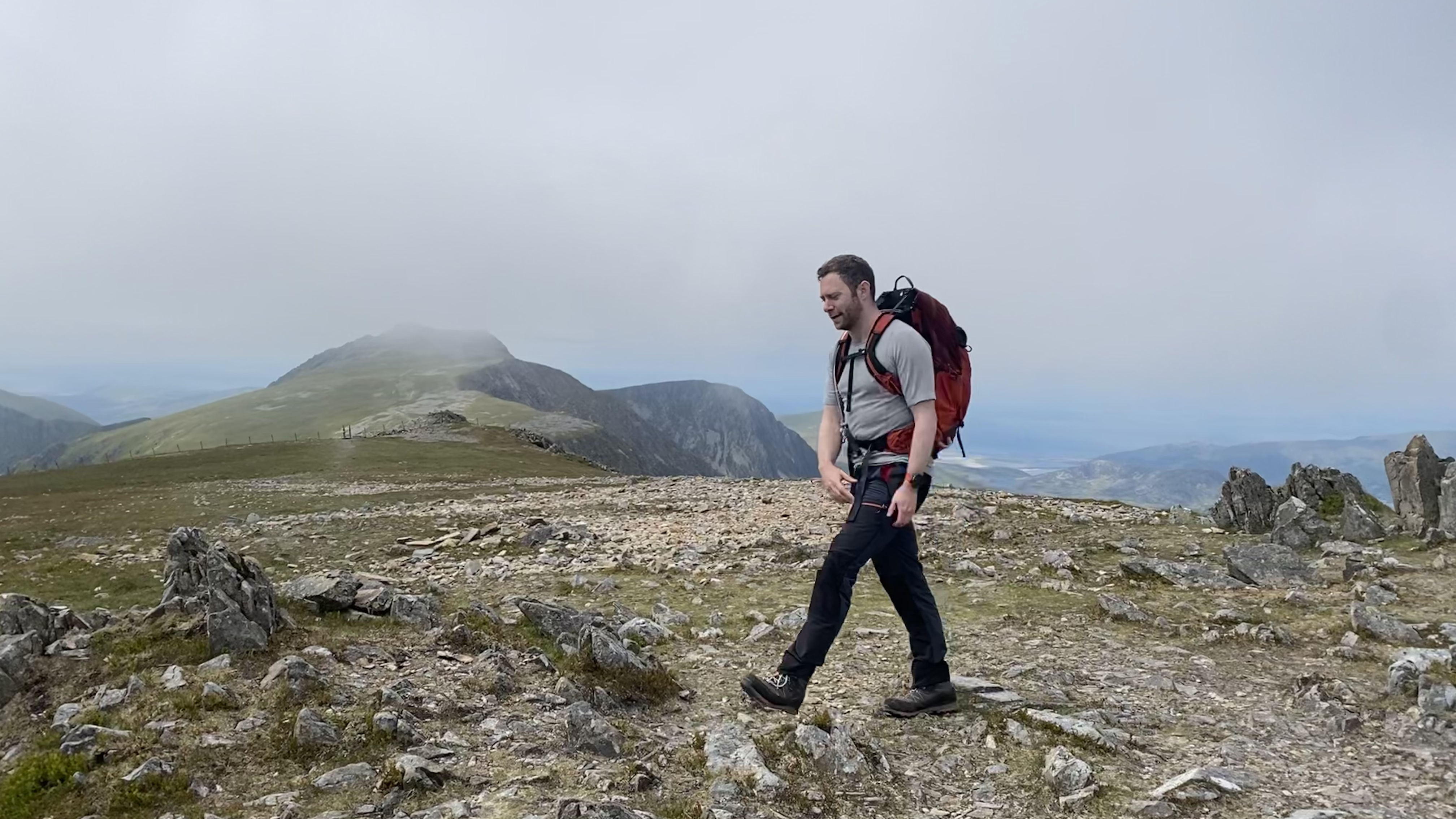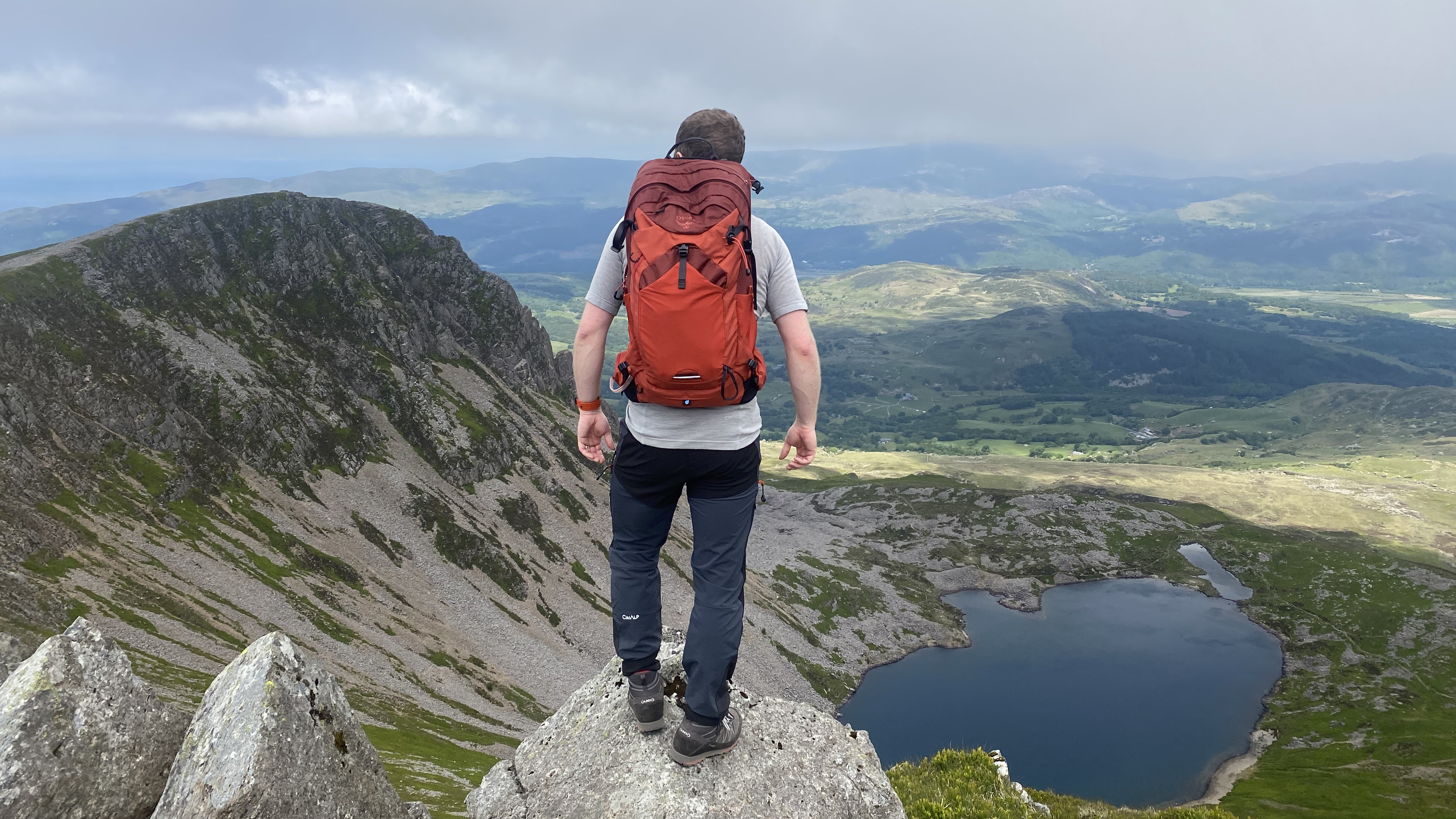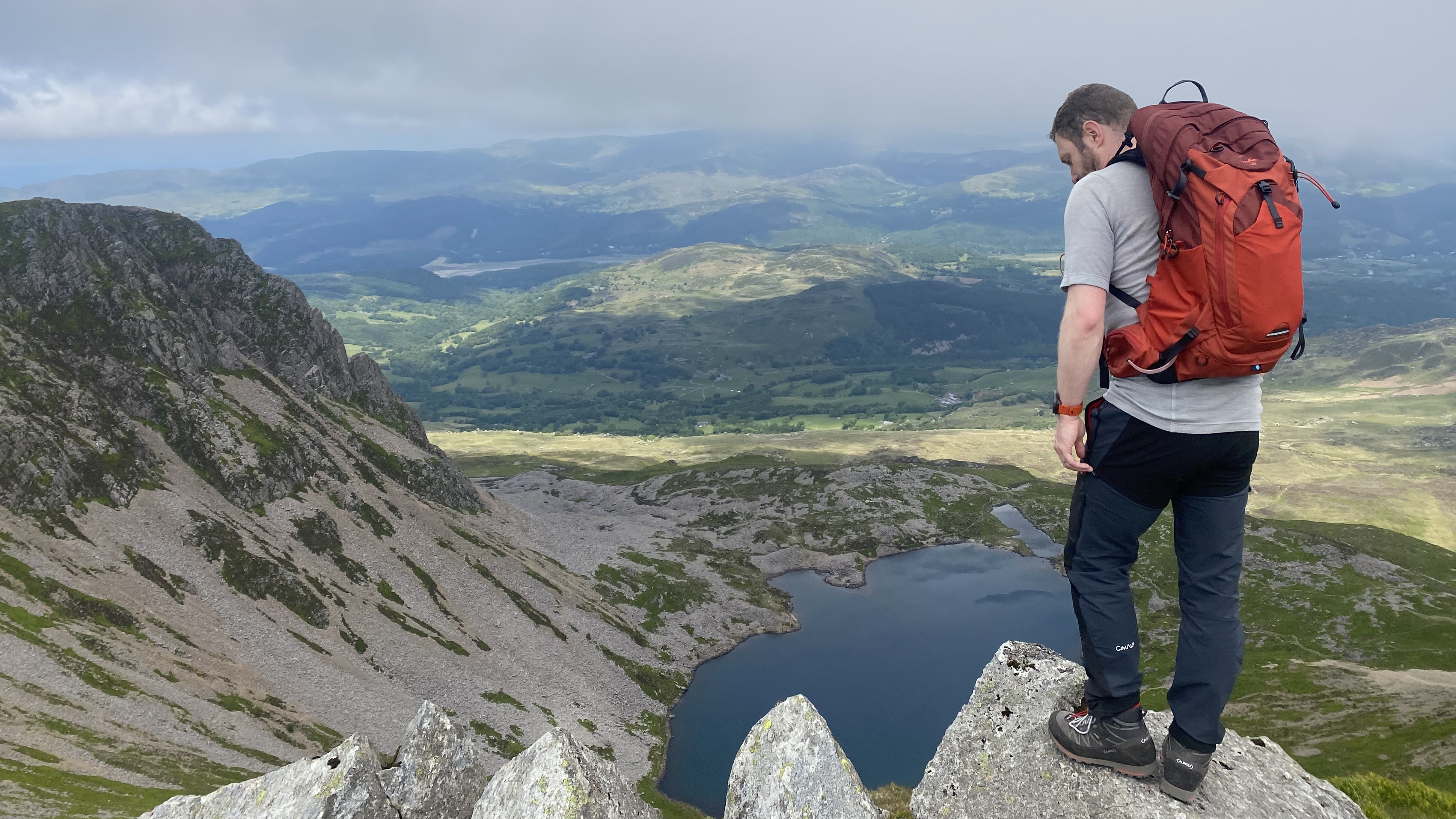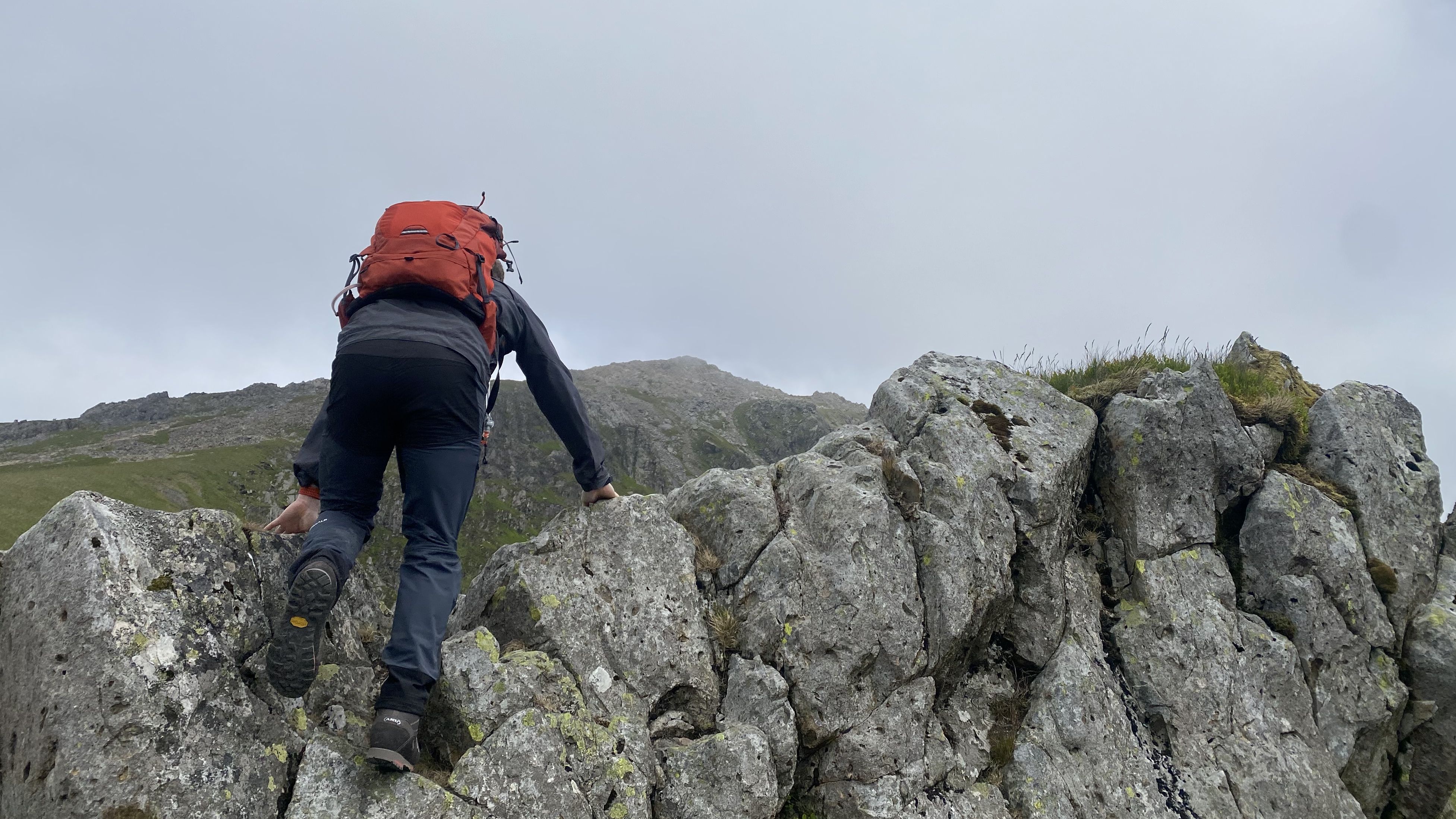Advnture Verdict
A classy hydration daypack that offers serious mountain goers a comfortable carry system for all kinds of day hikes. Its plush and adjustable harness system leads to a well ventilated and barely there carrying sensation, while the myriad storage options chime with hikers who like to be highly organized. It’s weight and more technical features means it’s not a daypack you’d take into town but for the joys of mountain hiking and hill walking days, few packs are better.
Pros
- +
Gender-specific fits
- +
Feels premium
- +
Durable, 100% recycled fabrics
- +
Well ventilated back panel
- +
Adjustable harness
- +
Loads of storage options
- +
2.5L reservoir included
Cons
- -
Perhaps heavier than it needs to be
- -
More expensive than other daypacks of this capacity
- -
Not compatible with twin ice axes
- -
No integrated safety whistle
You can trust Advnture
Osprey Manta 24: first impressions
With more daypacks than you can shake a Nordic pole at, even if you’ve decided Osprey are the brand for you, choosing between their offerings is no mean feat. Some of the packs are good all-rounders, while others perform specific tasks beautifully but aren’t quite as versatile.
The Manta (male) and Mira (female) packs are for those looking for a premium, gender-specific hydration day pack that’ll deliver excellent performance and comfort for technical mountain hikes. They include a 2.5-liter hydration bladder as standard and feature quality fabrics and components throughout.
Upon first acquaintance, I kept finding extra zippered compartments and pockets on the Manta. It splits its 24 liters of capacity across 10 different places to put stuff, although this does include both the dedicated hydration compartment and the zippered pouch for the rain cover.
List price: $195 (US)
Weight (empty): 1.3kg / 46oz
Volume: 24L (34L versions also available, plus women’s 22L and 32L)
Size: 56cm x 36cm x 30cm / 22in x 14in x 12in
Variations available: Women’s Mira versions also available
Back length: 56cm / 22in
Materials: Bluesign approved 100% recycled 210D high-tenacity honey comb contrast nylon, DWR treatments made without PFAS
Colors: Black, Green Shade, Red
Compatibility: Day hiking, light winter walking, scrambling, via ferrata
Nevertheless, all these compartments will appeal to the system-orientated hiker, the sort who likes to have trinkets and tools quickly accessible by virtue of the fact they’re not stuffed on top of each other in the main body of the pack. I’ve got to admit, I quite like this approach. Oh, and there’s an ice axe attachment system too, hinting at the pack’s suitability for light winter use.
So, that’s one side of the pack, what about the harness system. Well, it doesn’t look like a standard daypack from here, with the kind of plush EVA padding and adjustability options I’d expect from a larger pack. Here’s the thing, the Manta’s high end fabrics, premium components and weight-distributing peripheral frame mean that it weighs 1.3kg (46oz) when empty, which is quite a bit for a 24-liter pack. Osprey have clearly gone all out to achieve a pack that hauls medium loads in a supportive and comfortable way.

Sustainability in mind
Both the Manta and Mira packs are made with Bluesign approved, 100% recycled fabric. In this case, it’s a hard-wearing 210D honey comb contrast nylon that’s been treated with PFAS-free DWR (durable water repellent). This means it’ll withstand a great deal of abuse, abrasion and assault from the mountain elements. However, it’s not fully waterproof on its own, which is why it comes with a compatible rain cover.

A plush, gender specific and highly adjustable harness
Both the male Manta and the female Mira boast a gender specific harness system, that’s fully adjustable for finding that Goldilocks fit. The height of the shoulder straps can be easily adjusted by up to 4 inches thanks to an injection-molded ladder system, while straps at the top and bottom allow finer tuning.
All the latest inspiration, tips and guides to help you plan your next Advnture!
A ventilated, tensioned backpanel holds the pack away from the body, meaning less chance of getting a sweaty back on hot days. Behind all of this is the Manta’s skeleton, a peripheral frame that effectively distributes the weight of the pack to the hip belt. This is important, as all its features and premium materials mean that the Manta is on the heavier side for a daypack of this capacity.

With plush EVA padding and wide, spacermesh, the shoulder straps have more in common with some of Osprey’s larger backpacks, such as the Kestrel, rather than most of their daypacks of this size. These features are there to achieve supreme comfort and breathability, whatever the weather.
The hip belt is padded with EVA foam and features a couple of zippered pockets for stashing valuables. A twin strap tightening system allows the wearer to achieve the optimum fit, once buckled up. Upper and lower compression straps bring everything in close for comfort and stability.
Ability and versatility
As mentioned, there are 10 different storage compartments on the Manta. Starting from the top: we’ve got the zippered hydration bladder compartment; the two-way zippered top-loading main compartment; a small, zippered valuables pouch; a sizeable zippered side-access pocket with internal mesh compartment for organisation (so, make that 11 places to put items); an open, stretch mesh front pouch with buckle for added security; two open side mesh pockets; two zippered hip belt pockets; and, last of all, the zippered rain cover compartment at the bottom.
One neat touch is how far down the zips go on the main compartment, giving access to items buried quite far down. I also liked the key clip in the zippered side-access compartment and the easy to grab zip pulls on each and every zipper. The side mesh pockets are also semi-open down one side, which allows dual access, letting you grab a water bottle from the side while hiking, though it also makes them a little less secure than I’d like.

A real selling point of the Manta 24 is that it comes with a compatible 2.5 liter Osprey Hydraulics hydration bladder. You might argue that any old hydration bladder with a tube fits any pack and you’d be right to a point. But in this case, when we say compatible, we really mean it. The bladder clips into its dedicated, zippered compartment for easy hanging, which means it’s always orientated so that there’s water where the bladder feeds the drinking tube. Meanwhile, the tube’s bite-valve has a magnetized section that attaches to the sternum strap, which stops it flapping about as you walk.
As well as the single walking axe attachment, there are ‘stow-on-the-go’ trekking pole attachments too. The compatibility with a single axe means the Manta is suitable for light winter walks, though its low capacity makes it unsuited to bigger winter adventures, while there’s no facility for climbers wielding twin ice tools.
Finally, at the bottom of the pack is the usual zippered rain cover compartment. If, like me, you prefer to keep things dry with internal dry bags rather than an external rain cover, you can leave the cover at home and gain yet another little storage compartment.
In the mountains
I tested the Manta 24 during the same period as I was also testing Osprey’s Hikelite 26 which, although having 2 liters more capacity, is much lighter (800g as opposed to 1.3kg). The Hikelite also feels much smaller and is considerably less pricy. If I was nipping to the shops or grabbing a bag for a casual day hike, there’s no doubt that I'd be reaching for the Hikelite, due to its lightweight feel, street-ready looks and unfussy design.

However, a comparison in the mountains revealed the Manta to be the superior pack for technical trails, compared to the more casual Hikelite. Its superior fabrics make it more resistant to repeated abrasion with rock and vegetation and I can well imagine the Manta lasting for many adventures. It’s harness system effectively spreads the load, while the level of padding ensures comfort throughout the day.
It's the kind of pack that, once I was striding happily along a ridge, I easily forgot I was wearing. It’s got a lovely, wrap around feel to it and, once adjusted properly and with the compression straps deployed, really feels like a part of me, which is what I’m after for technical mountain days.

The magnetic closure and bite valve attachment on the sternum strap is an interesting feature. It takes a little bit of trial and error to find the sweet spot that means the magnets latch properly. If there’s too much of a bend in the tube, the magnetic force is overpowered by gravity and the tube flops off. However, once I’d mastered the length of tube needed, it worked perfectly well. Gimmick or gamechanger, I’m not sure yet. However, it has replaced Osprey’s usual integrated safety whistle and I know which feature I’d rather have in an emergency.
I enjoyed working out systems that employed all the Manta's various storage options. Items like headlamps, maps, compasses, snacks and gels all had their own place and, once I was in tune with my system, it meant I was able to find things quickly when I needed to. However, I’d have preferred the side mesh pockets not to be open on one side, as it was easy for items to fall out if I wasn’t careful.
Alex is a freelance adventure writer and mountain leader with an insatiable passion for the mountains. A Cumbrian born and bred, his native English Lake District has a special place in his heart, though he is at least equally happy in North Wales, the Scottish Highlands or the European Alps. Through his hiking, mountaineering, climbing and trail running adventures, Alex aims to inspire others to get outdoors. He's the former President of the London Mountaineering Club, is training to become a winter mountain leader, looking to finally finish bagging all the Wainwright fells of the Lake District and is always keen to head to the 4,000-meter peaks of the Alps. www.alexfoxfield.com


